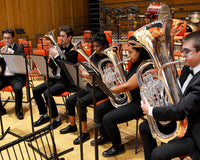
One of the questions most frequently asked of me and my team of Guitar teachers is:
“How can I improve my ability to play Guitar and sing at the same time?”
Whether you’re an aspiring singer-songwriter, a lead Guitarist singing backing vocals, or a busking-one-man-band, this is a really important skill for any musician who is even semi-serious. So here are 3 top tips on how to improve your playing Guitar and singing at the same time:
Tip #1: Nail The Guitar Part!
It’s important to make the Guitar part second nature before you can add your vocal part. You need to know the Guitar part inside-out. It’s as though you need to be able to play it while doing something completely different, (because you do - singing!) This is exactly the same principle as an experienced car driver being able to talk while they drive, (or more pertinently, sing along to their car radio) where perhaps a learner driver can’t. Driving comes naturally with experience, due to all the practice and experience of a repetitive sequence of actions. Your playing needs to be the same. Know it and know it well, so your singing has a solid canvas and not a difficult distraction.
Tip #2: Isolate The Hard Parts!
You’ll quickly discover that some songs or sections of songs come pretty easily, while others make you stumble and stutter repeatedly. Making a mistake in the same part of a song repeatedly is extremely common. So much so that a tricky, repeatedly-fumbled stretch of music can become demonised in the player’s mind, and begin to take on a character of its own, meaning the musician starts to make errors even earlier. There’s only one thing to do here and that’s nip it in the bud. Isolate the problem bar/line/whatever it may be and break it down into manageable pieces.
The most frequently occurring reason a section of playing and singing is tricky is a contrast between the rhythm and timing of the Guitar part, and the rhythm and timing of the vocal line. The thing to do here is to deconstruct the passage and plant some flags at the most important points. Maybe you’ll find there’s a vocal emphasis on the offbeats (the spaces between the beats or down strums rather than on the beats/down strums themselves) - In this instance the thing to do would be to use the beat immediately beforehand like a springboard, into this between-the-beats marsh land! The beat becomes your cue, the space is where the music happens!
Take this principle on board more generally for your Music practice: Turn a song’s strange qualities to your advantage by using them as prompts and cues.
If you isolate and practise tricky parts slowly, they’ll be as easy as the easy parts are in no time at all!
Tip #3: Exaggerate The Rhythms!
OK, so these tips above are great, but they take a little bit of time. Not a problem for any dedicated Guitarist, but what can we do to make the song happen in the meantime?
The best advice here is to exaggerate the rhythms during song-learning and early-practice. Until such time as the song is nailed, emphasise the rhythms, the strumming and the important beats. You’ll end up with a version that although perhaps a bit too rhythmic and detached, can at least be played (and sung) through. Now you’re getting somewhere! From this starting point, you can now work on making the song smoother and more expressive, but from a standpoint of already having a performable, in-progress version of the song.
Good Luck!
 One of the questions most frequently asked of me and my team of Guitar teachers is:
“How can I improve my ability to play Guitar and sing at the same time?”
Whether you’re an aspiring singer-songwriter, a lead Guitarist singing backing vocals, or a busking-one-man-band, this is a really important skill for any musician who is even semi-serious. So here are 3 top tips on how to improve your playing Guitar and singing at the same time:
One of the questions most frequently asked of me and my team of Guitar teachers is:
“How can I improve my ability to play Guitar and sing at the same time?”
Whether you’re an aspiring singer-songwriter, a lead Guitarist singing backing vocals, or a busking-one-man-band, this is a really important skill for any musician who is even semi-serious. So here are 3 top tips on how to improve your playing Guitar and singing at the same time:

 One of the questions most frequently asked of me and my team of Guitar teachers is:
“How can I improve my ability to play Guitar and sing at the same time?”
Whether you’re an aspiring singer-songwriter, a lead Guitarist singing backing vocals, or a busking-one-man-band, this is a really important skill for any musician who is even semi-serious. So here are 3 top tips on how to improve your playing Guitar and singing at the same time:
One of the questions most frequently asked of me and my team of Guitar teachers is:
“How can I improve my ability to play Guitar and sing at the same time?”
Whether you’re an aspiring singer-songwriter, a lead Guitarist singing backing vocals, or a busking-one-man-band, this is a really important skill for any musician who is even semi-serious. So here are 3 top tips on how to improve your playing Guitar and singing at the same time:














